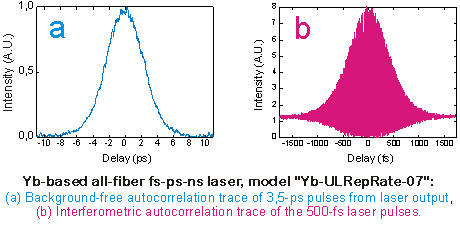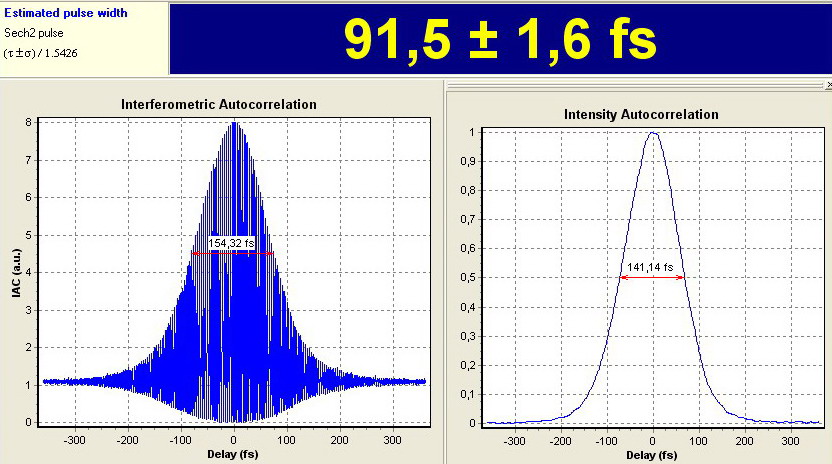
Del Mar Photonics - Ultrafast Lasers portfolio - Newsletter
Ytterbium-doped Femtosecond Solid-State Laser Tourmaline Yb-SS400
Request a quote
The Yb-doped Tourmaline Yb-SS400 laser radiates at 1059±2 nm. New design features integrated pump diode module for greater system
stability and turn-key operation. The solid-bulk body of the laser ensures
maximum rigidity, while self-starting design provides for easy "plug-and-play"
operation.
Tourmaline Yb-SS400/150
Pulse duration (FWHM), fs < 150
Wavelength, nm 1059±2
Output power, mW* >400
Repetition rate, MHz 80*
Output power stability** ± 1% (see graph)
Spatial mode TEMoo
Polarization, linear >100:1 (horizontal)
Laser head dimensions, mm 710x165x110
Power supply dimensions, mm
230x200x85
* - custom values available upon request
** - at stable room conditions over 12 hours after 30 minutes warm-up

Small footprint
Integrated pump source
Highly stable
Short pulse duration
Self-starting of femtosecond regime
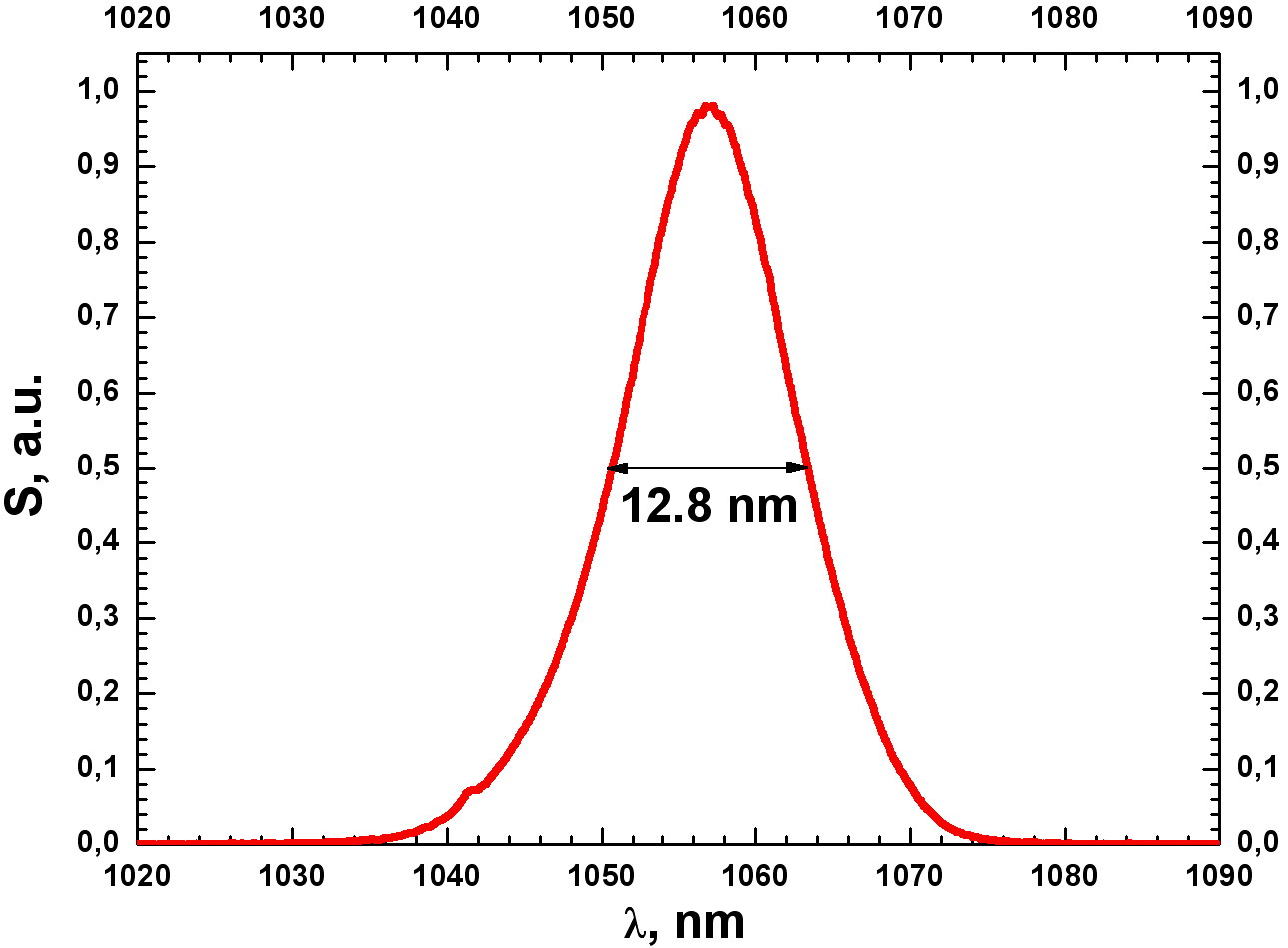
Application:
- Seed oscillator for amplifiers
- Multi-photon excitation microscopy
- Pump-probe spectroscopy
- Supercontinuum generation
- Generation of terahertz radiation
- Time-resolved spectroscopy
- Optical coherent tomography
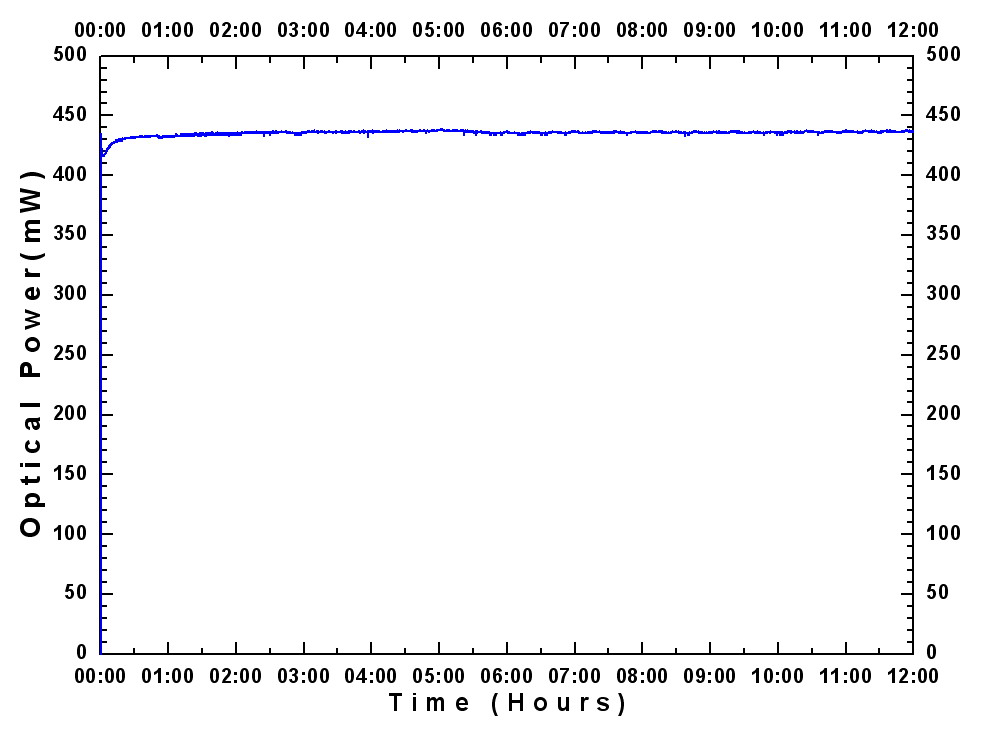
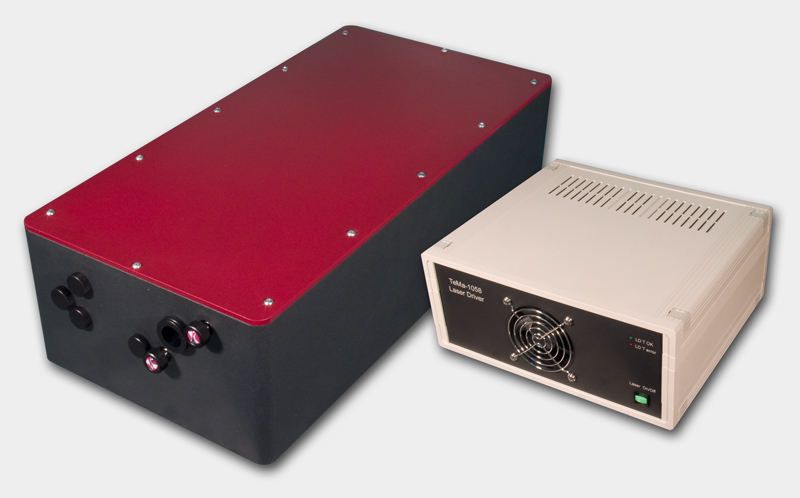 |
Tourmaline Yb-SS-1058/100 Femtosecond solid state laser system The Yb-doped Tourmaline Yb-SS laser radiates at 1058±2 nm with more than 1 W of average power, and enables the user to enjoy Ti:Sapphire level power at over-micron wavelengths. This new design from Del Mar's engineers features an integrated pump diode module for greater system stability and turn-key operation. The solid bulk body of the laser ensures maximum rigidity, while self-starting design provides for easy "plug-and-play" operation. Laser for second harmonic imaging in the retina with the voltage sensitive dye FM4-64 |
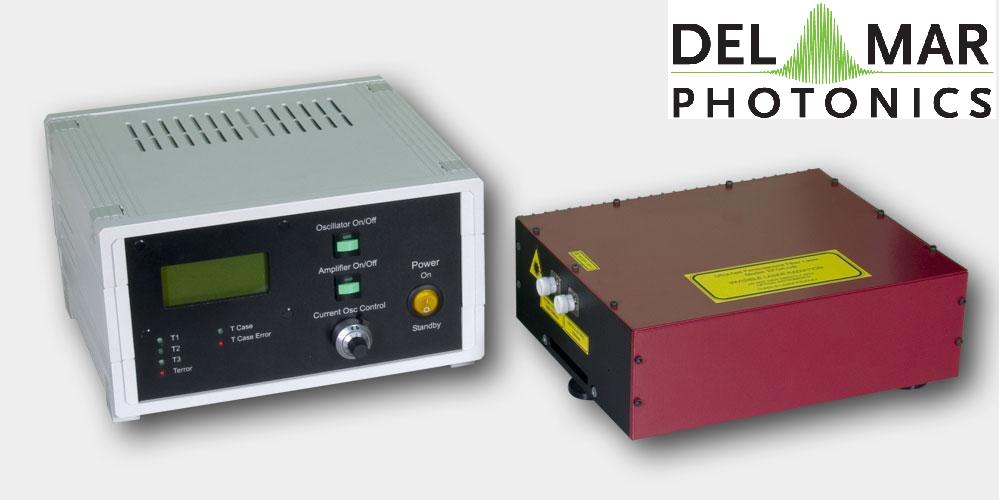 |
Femtosecond fiber laser Model Pearl-70P300 - request a quote Femtosecond pulsed lasers are used in many fields of physics, biology, medicine and many other natural sciences and applications: material processing, multiphoton microscopy, «pump-probe» spectroscopy, parametric generation and optical frequency metrology. Femtosecond fiber lasers offer stable and steady operation without constant realignment. The Pearl-70P300 laser comprises: a passively mode-locked fiber laser, providing pulses with repetition rate 60 MHz and having duration of 250-5000 fs, an amplifier based on Er3+ doped fiber waveguide with pumping by two laser diodes, a prism compressor for amplified pulse compression. Pearl Ultra-Compact Ultrafast Picosecond Fiber Oscillator |
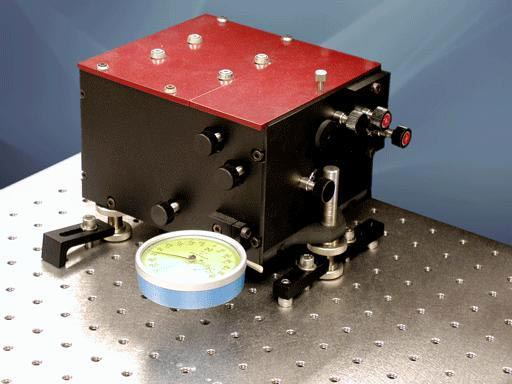 |
Reef femtosecond autocorrelators The autocorrelation technique is the most common method used to determine laser pulse width characteristics on a femtosecond time scale. The basic optical configuration of the autocorrelator is similar to that of an interferometer (Figure.1). An incoming pulse train is split into two beams of equal intensity. An adjustable optical delay is inserted into one of the arms. The two beams are then recombined within a nonlinear material (semiconductor) for two photon absorption (TPA). The incident pulses directly generate a nonlinear TPA photocurrent in the semiconductor, and the detection of this photocurrent as a function of interferometer optical delay between the interacting pulses yields the pulse autocorrelation function. The TPA process is polarization-independent and non-phasematched, simplifying alignment. Reef-RT autocorrelator measures laser pulse durations ranging from 20 femtoseconds to picosecond regime. It measures pulse widths from both low energy, high repetition rate oscillators and high energy, low repetition rate amplifiers. Compact control unit operates autocorrelator head and optional spectrometer through on-screen menus. Autocorrelation trace and spectrum can be displayed and analyzed on screen or downloaded to remote computer. New: Reef-20DDR autocorrelator - Multishot-FROG for femtosecond fiber laser oscillator and amplifier Collinear (interferometric) autocorrelation for 1300-2000 nm wavelength range |
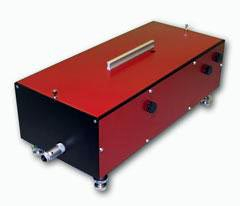 |
Trestles Fourth Harmonic Generator - request a quote Trestles FHG is designed to work with Ti:sapphire lasers, such as the Trestles Ti:sapphire laser to provide fourth harmonic generation. Trestles FHG is an affordable and easy solution to generating pulses around 200 nm. Trestles FHG is available in two versions. The first version uses the third harmonic mixed with the fundamental wavelength to produce fourth harmonic generation. This option provides the fundamental, as well as the second, third and fourth harmonics. For input of 810 nm, 1 W, 82MHz and 50 fs, output of the fourth harmonic is at 203 nm, 300-400 fs and power is 3 mW. The second option uses two separate second harmonic generation stages to produce fourth harmonic generation. With input of 810 nm, 1 W, 82 MHz and 50 fs, output of the fourth harmonic is at 210 nm, pulse width of 500 fs and power of 10 mW. The Trestles FHG from Del Mar Photonics is an easily installed solution for adding functionality to any femtosecond laser system. Extended ranges will increase capabilities for research, and specific applications such as microscopy and spectroscopy. |
 |
Near IR viewers Ultraviolet viewers are designed to observe radiation emitted by UV sources. |
Del Mar Photonics
Yb-based high-energy fiber laser system kit, model
Tourmaline Yb-ULRepRate-07, includes:
- low-repetition-rate high-energy mode-locked Yb-doped all-fiber laser with open
architecture which provides possibility of educational & experimental work for
obtaining ultra-low-repetition-rate (up to 10 kHz) and study of parabolic shaped
pulses
- powerful fiber amplifier.

Features:
- record-breaking ultra-low repetition rate (ULRepRate) for mode-locked lasers
- new concept high-energy mode-locked fiber laser system without Q-switching and
cavity dumping techniques
- super-wide range of output pulse durations from femtosecond to nanosecond
- open architecture master oscillator platform may be used for realization of
different configurations of femtosecond, picosecond and nanosecond pulse fiber
lasers.
Specification:
Wavelength: 1.07 nm ±0.1 nm
Pulse duration: 500 fs - 3 ns
Repetition rate: 25-5 MHz and low (up to 10 kHz)
Pulse energy: up to 10 µJ (microJoule)
